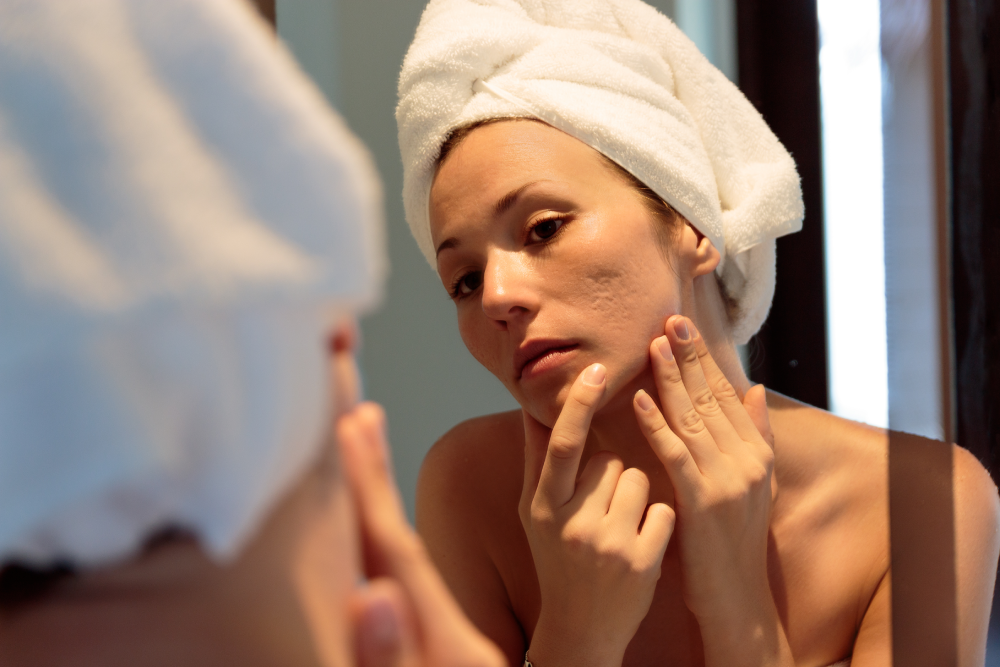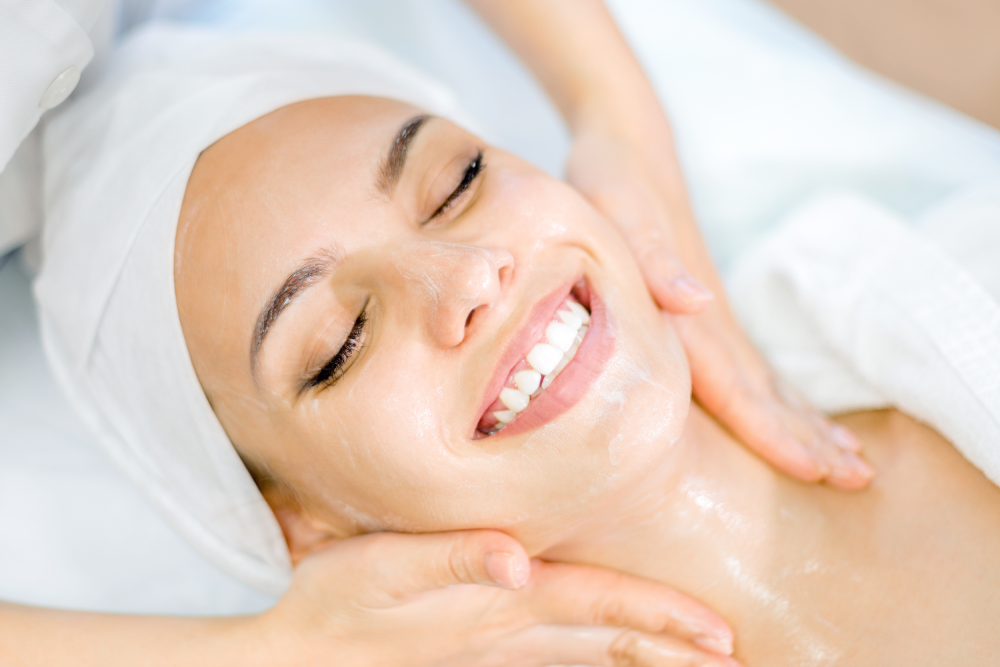Achieving radiant, healthy skin isn’t just about genetics or the latest skincare products; it’s about consistent care and understanding your skin’s unique needs. Facials, often perceived as a luxury, are in fact a cornerstone of effective skincare maintenance.
They offer deep cleansing, hydration, and targeted treatments that go beyond the capabilities of at-home routines. Many are unaware that the frequency of facials should align with the skin’s natural regeneration cycle, typically every 28 days.
Regular facials can address various skin concerns, from acne to aging, and help maintain a youthful glow. By understanding the optimal timing and incorporating effective post-facial practices, you can maximize the benefits and keep your skin in top condition.
What Exactly Is a Facial?
A facial is a multi-step skincare treatment performed by licensed professionals aimed at cleansing, exfoliating, and nourishing the skin. It typically includes:
- Cleansing to remove impurities and makeup.
- Exfoliation to slough off dead skin cells.
- Extraction of blackheads and clogged pores.
- Massage to promote circulation and relaxation.
- Mask application tailored to your skin type.
- Moisturizing to hydrate and protect the skin.
Facials can be customized to address specific concerns, such as acne, dryness, or signs of aging, making them a versatile tool in your skincare arsenal.
Determining the Ideal Facial Frequency
One of the most common questions patients ask is: “How often should I really get a deep cleansing facial?” The truth is, there’s no one-size-fits-all answer. The ideal frequency depends on a variety of factors—your skin type, age, lifestyle, and specific skin concerns all play a role.
Every 4 to 6 Weeks: The Gold Standard
Most skincare experts recommend getting a professional facial every 4 to 6 weeks. This timing aligns with the skin’s natural regeneration cycle. On average, skin cells renew themselves approximately every 28 to 40 days. A facial at this interval can help:
- Remove dead skin cells before they accumulate and clog pores.
- Promote healthy cell turnover for brighter, smoother skin.
- Prevent breakouts and minimize blackheads or congestion.
- Maintain hydration and support the skin’s barrier function.
Keeping to this schedule allows your aesthetician to catch and address minor skin concerns before they become major ones.
Tailoring Frequency to Skin Type and Goals
While 4 to 6 weeks works for many, personalization is key. Here’s a breakdown:
- Oily or acne-prone skin: You might benefit from more frequent facials, especially during acne flare-ups or when hormonal changes increase oil production. Bi-weekly treatments can help manage breakouts and reduce inflammation before transitioning to monthly maintenance.
- Dry or sensitive skin: Regular monthly facials are usually enough. These skin types can be easily irritated, so a gentle approach focused on hydration and barrier repair is essential.
- Mature or aging skin: Consistent facials every 4 to 6 weeks can stimulate collagen production, address fine lines, and improve elasticity. Anti-aging facials often include treatments like LED light therapy or gentle chemical exfoliation to maintain a youthful glow.
- Normal or combination skin: Even if you don’t experience major skin issues, monthly facials can keep your skin balanced and radiant, especially during seasonal changes when skin tends to shift.

Lifestyle and Environmental Factors Matter
Your environment and habits also influence how often you should book facials:
- Urban living: Exposure to pollution can lead to clogged pores and dullness, making regular deep-cleansing facials more beneficial.
- High stress: Stress can exacerbate skin conditions like acne or eczema. Regular facials can help calm the skin and provide much-needed relaxation.
- Frequent travelers: Airplane travel can dehydrate skin, while changing climates can lead to sensitivity or breakouts. Monthly facials help counteract these effects.
Event-Based Timing
If you’re prepping for a big event—like a wedding, reunion, or vacation—plan ahead. Ideally, schedule your facial 5 to 10 days before the event to allow time for any redness to subside and for your skin to reach peak radiance.
For more intensive treatments (like chemical peels or microdermabrasion), consult with your aesthetician about optimal timing to ensure full recovery before your event.
Maximizing Facial Benefits: Effective Tips
Getting a facial is more than just a relaxing experience—it’s a long-term investment in your skin’s health. To truly make the most of your treatments, it’s essential to adopt a smart aftercare and maintenance strategy.
Let’s explore some expert-backed ways to extend those glowing results:
1. Maintain a Consistent Skincare Routine
A facial gives your skin a fresh start, but your at-home routine will determine how long the benefits last. Stick to a daily regimen that includes:
- A gentle cleanser to keep pores clear without stripping natural oils.
- A hydrating moisturizer tailored to your skin type to maintain moisture balance.
- An antioxidant serum (like Vitamin C) to protect against environmental stressors.
Skipping steps—even occasionally—can allow old issues to resurface quickly. Consistency reinforces the professional treatment and protects your progress.
2. Stay Hydrated
Think of hydration as fuel for your skin’s healing and regeneration process. Water aids in flushing out toxins, supporting cellular turnover, and keeping skin plump and elastic. Dehydrated skin can appear dull, exaggerate fine lines, and may not respond as effectively to treatments.
Aim for at least eight glasses of water a day—and consider adding hydrating foods like cucumbers, watermelon, and leafy greens to your diet for an extra boost.
3. Protect Your Skin from the Sun
Sun exposure is one of the fastest ways to undo your facial’s benefits. Even a single day without protection can lead to hyperpigmentation, collagen breakdown, and accelerated aging.
Use a broad-spectrum sunscreen with SPF 30 or higher every morning. Reapply every two hours when outdoors, especially after sweating or swimming. Don’t forget often-missed areas like the ears, neck, and back of hands—these are common sites for premature aging.
4. Avoid Harsh Products Post-Facial
Your skin may be more sensitive for 48 to 72 hours after a facial. Avoid exfoliating scrubs, retinoids, strong acids (like glycolic or salicylic acid), and at-home peels. Using these too soon can lead to redness, irritation, or even damage the skin’s protective barrier.
Stick with gentle, hydrating, and calming products during this window. Your aesthetician can also recommend specific post-facial products to support healing and enhance results.
5. Communicate with Your Aesthetician
Your aesthetician is your skincare partner. Open dialogue is key:
- Share any sensitivities, allergies, or skin changes since your last visit.
- Discuss your lifestyle—factors like stress, sleep, and diet all affect skin health.
- Be honest about what’s working and what’s not in your current routine.
This information allows your aesthetician to tailor treatments and recommend the most effective home care products, creating a holistic skincare plan that evolves with you.
6. Schedule Facials Strategically
Timing your facials can make a big difference. If you have an important event, book your facial 5 to 7 days in advance. This allows any post-treatment redness to subside and gives your skin time to reach peak radiance.
For routine maintenance, sticking to a consistent schedule—such as every 4 to 6 weeks—ensures your skin stays balanced, hydrated, and resilient. Regular facials can also prevent minor issues from becoming bigger concerns.
7. Support Skin Health from Within
Topical care is only part of the equation. Your skin reflects your overall health, so nourish it from the inside out:
- Eat a balanced diet rich in antioxidants, healthy fats, and vitamins.
- Prioritize sleep—skin regenerates during rest.
- Manage stress, which can trigger flare-ups of conditions like acne or rosacea.
Facials work best when paired with a healthy lifestyle.

8. Listen to Your Skin
Every person’s skin has a unique rhythm. Pay attention to how your skin responds post-facial:
- If you notice breakouts, dryness, or irritation, adjust your home care and discuss with your aesthetician.
- Celebrate positive changes, like improved texture, reduced breakouts, or enhanced glow—these are signs your current regimen is working.
Be patient. Skin renewal takes time, especially when addressing long-term concerns.
Embrace Healthy Skin with Pur Aesthetics and Wellness
At Pur Aesthetics and Wellness in Granger, IN, we understand that skincare is a personal journey. Our team of dedicated professionals is committed to providing customized facials that cater to your unique skin type and concerns.
By integrating regular facials into your skincare routine, you invest in the long-term health and vitality of your skin. Experience the transformative power of professional skincare.
Book your appointment with us today and take the first step towards radiant, healthy skin!

